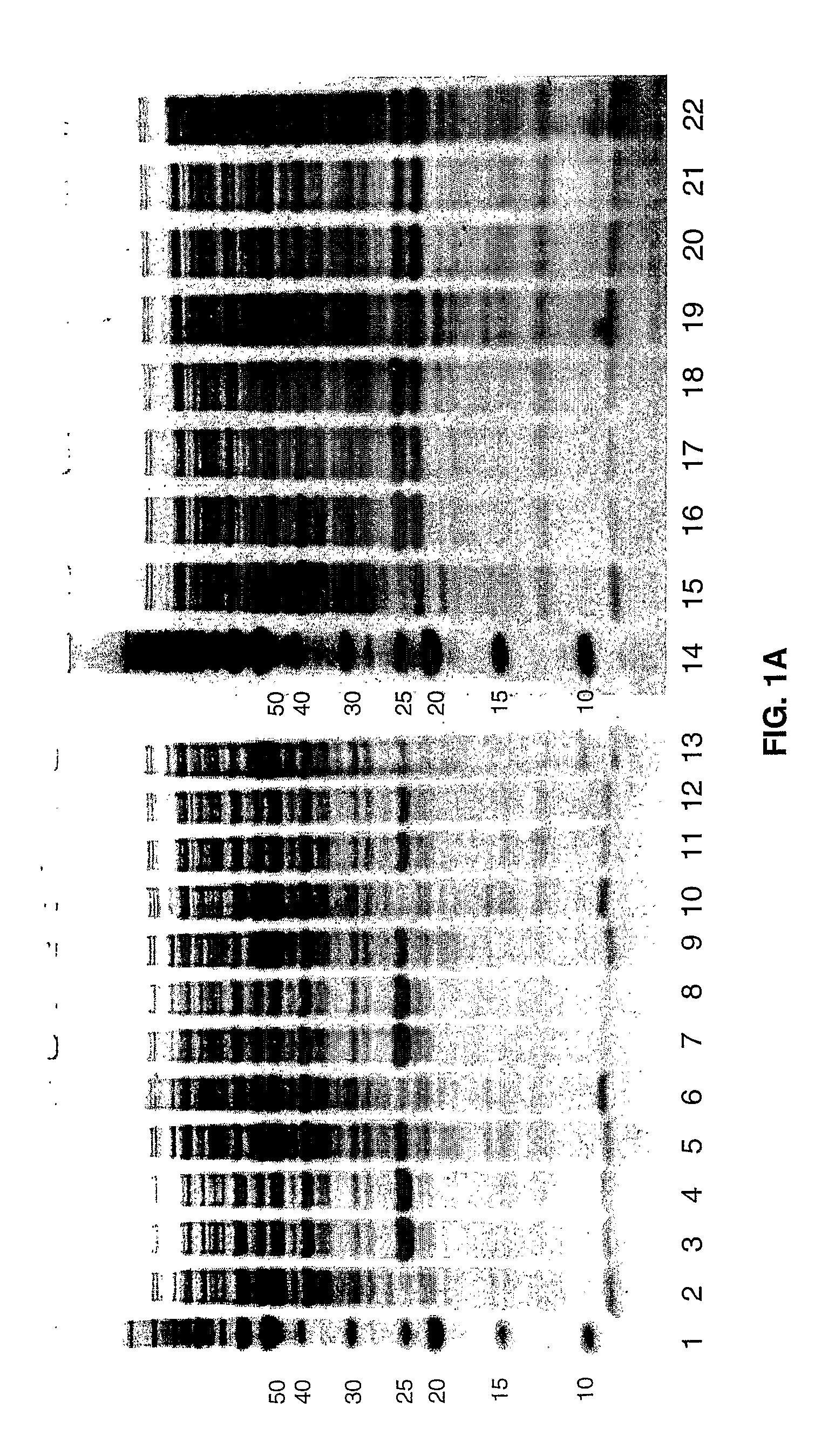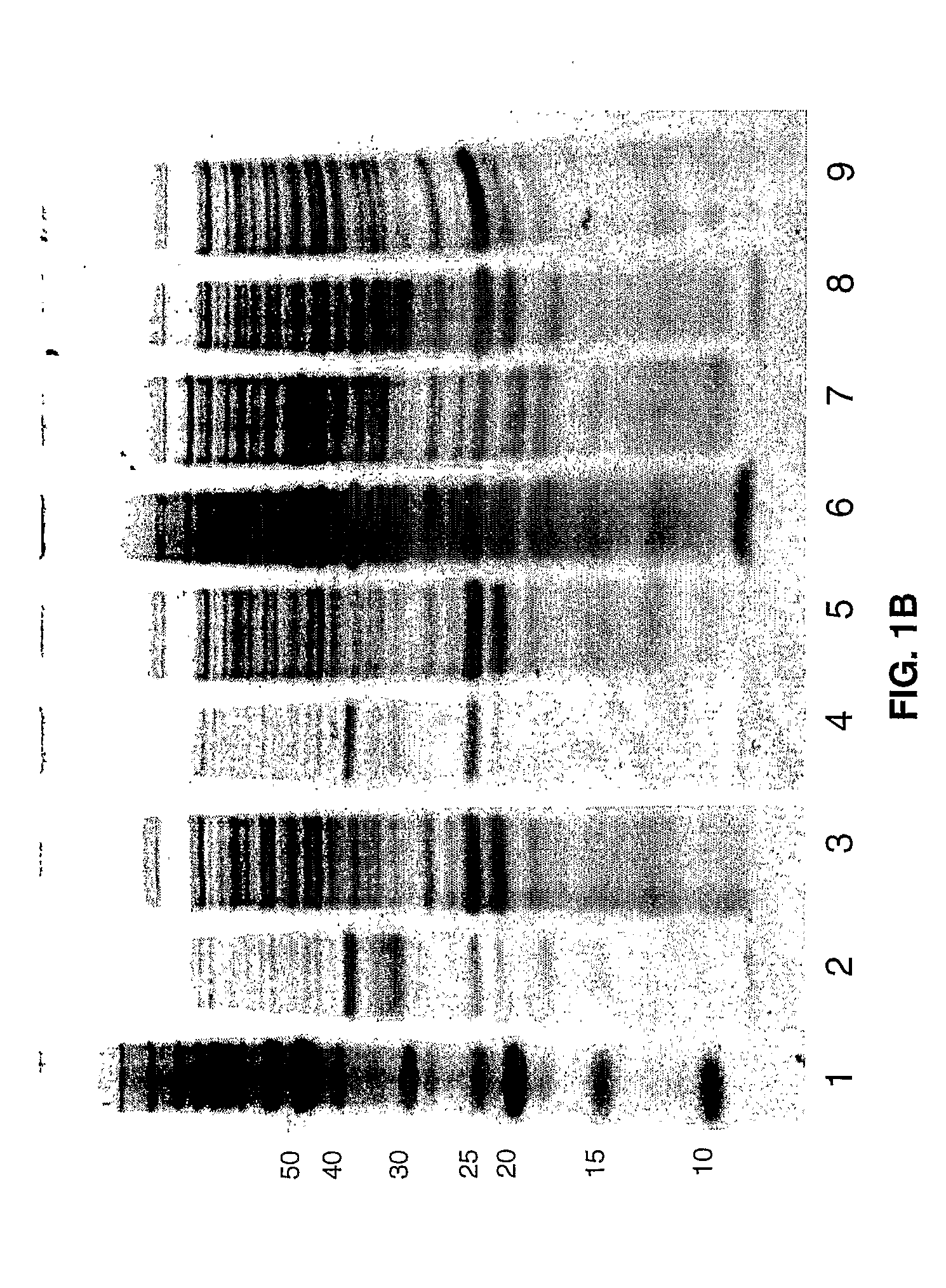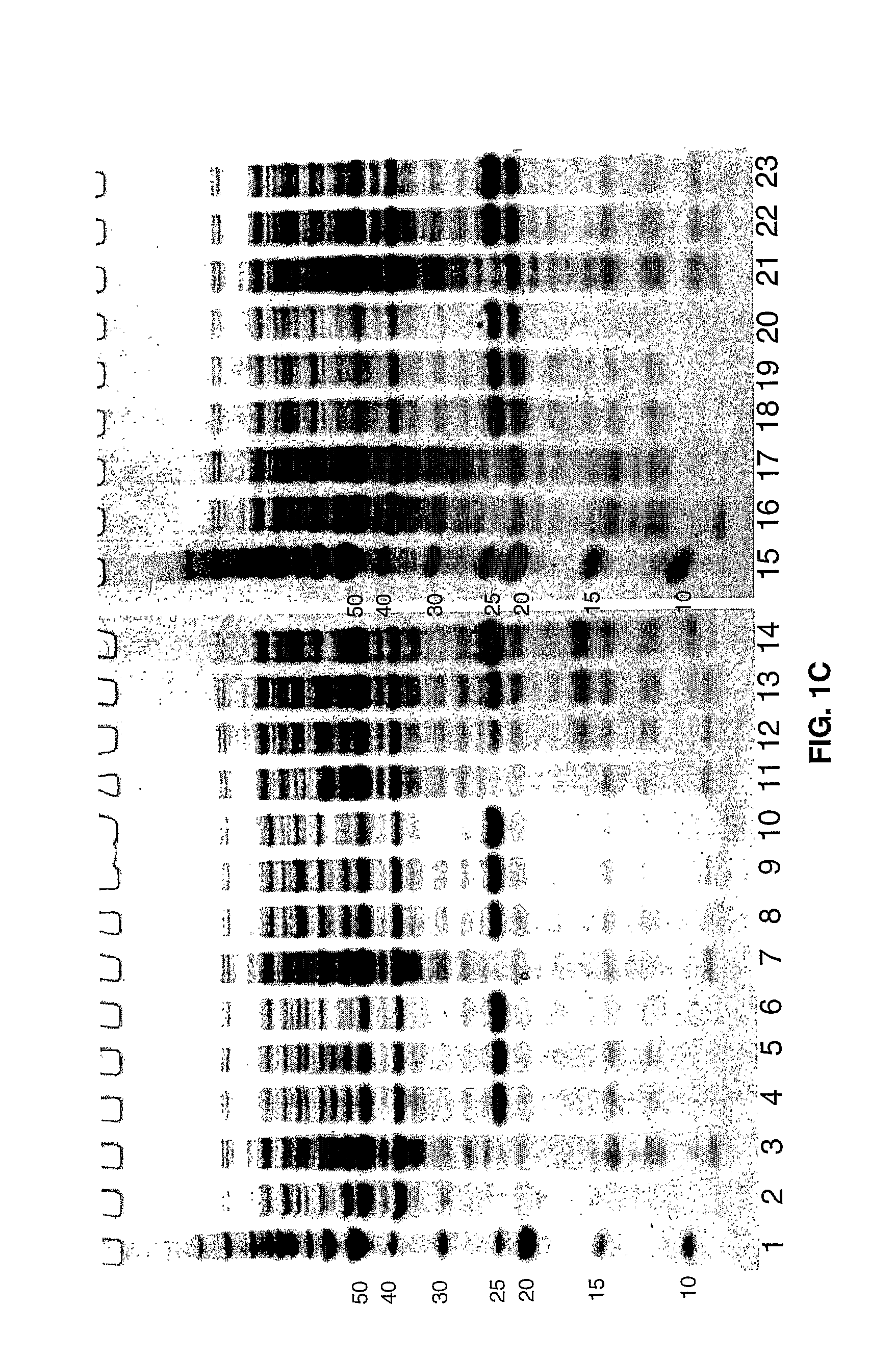Remodeling and Glycopegylation of Fibroblast Growth Factor (Fgf)
a technology of fibroblast growth factor and glycopegylation, which is applied in the direction of depsipeptides, peptide/protein ingredients, fungi, etc., can solve the problems of short half life and mutagenic properties of fgf-9, fgf-20, fgf-21, etc., and achieves cost-effective effects
- Summary
- Abstract
- Description
- Claims
- Application Information
AI Technical Summary
Benefits of technology
Problems solved by technology
Method used
Image
Examples
example 1
[0439]Exemplary regions on FGF-20 that are suited for the introduction of glycosylation sites by mutation are shown in Table 5, above. In all cases, the N-terminal Met may be present or absent on any FPGF mutant. The numbering of the amino acid residues is based on the initial unmodified sequence in which the left most residue, methionine, is numbered as position 1. To highlight how the mutant sequence differs in respect to the unmodified sequence, the numbering of unmodified amino acids as they appear in the sequences below remains unchanged following the modification. More than one of the described sequence modifications may be present in an FGF mutant of the present invention. Specifically, the preferred regions for introduction of mutations to create a glycosylation site(s) not present in the wild-type peptide are the nucleotide sequences that encode: amino acids 1-7 (REGION 1; SEQ ID NO:2), amino acids 20-42 (REGION 2; SEQ ID NO:3), amino acids 43-60 (REGION 3; SEQ ID NO:4), am...
example 2
[0449]A library of FGF-20 peptides each with one potential O-linked glycosylation site as disclosed in Example 1, is expressed in E. coli or by using in vitro translation methods. Protein is purified using either a heparin binding or IMAC capture method and tested by for in vitro biological activity. Those protein sequences that retain in vitro activity are tested as acceptors for GlycoPEGylation. GlycoPEGylated FGF-20's (40 kDa branched) are purified for further biological evaluation as outlined above.
example 3
[0450]Exemplary regions on FGF-21 that are suited for the introduction of glycosylation sites by mutation are shown in Table 7, above. In all cases, the N-terminal Met may be present or absent on any FGF mutant. The numbering of the amino acid residues is based on the initial unmodified sequence in which the left most residue, methionine, is numbered as position 1. To highlight how the mutant sequence differs in respect to the unmodified sequence, the numbering of unmodified amino acids as they appear in the mutant sequences below remains unchanged following the modification. More than one of the described sequence modifications may be present in an FGF mutant of the present invention. Specifically, the preferred regions for introduction of mutations to create a glycosylation site(s) not present in the wild-type peptide are the nucleotide sequences that encode: amino acids 1-8 (REGION 1; SEQ ID NO:147), amino acids 9-13 (REGION 2; SEQ ID NO:148), amino acids 46-54 (REGION 3; SEQ ID ...
PUM
| Property | Measurement | Unit |
|---|---|---|
| molecular mass | aaaaa | aaaaa |
| molecular weight | aaaaa | aaaaa |
| molecular weight | aaaaa | aaaaa |
Abstract
Description
Claims
Application Information
 Login to View More
Login to View More - R&D
- Intellectual Property
- Life Sciences
- Materials
- Tech Scout
- Unparalleled Data Quality
- Higher Quality Content
- 60% Fewer Hallucinations
Browse by: Latest US Patents, China's latest patents, Technical Efficacy Thesaurus, Application Domain, Technology Topic, Popular Technical Reports.
© 2025 PatSnap. All rights reserved.Legal|Privacy policy|Modern Slavery Act Transparency Statement|Sitemap|About US| Contact US: help@patsnap.com



